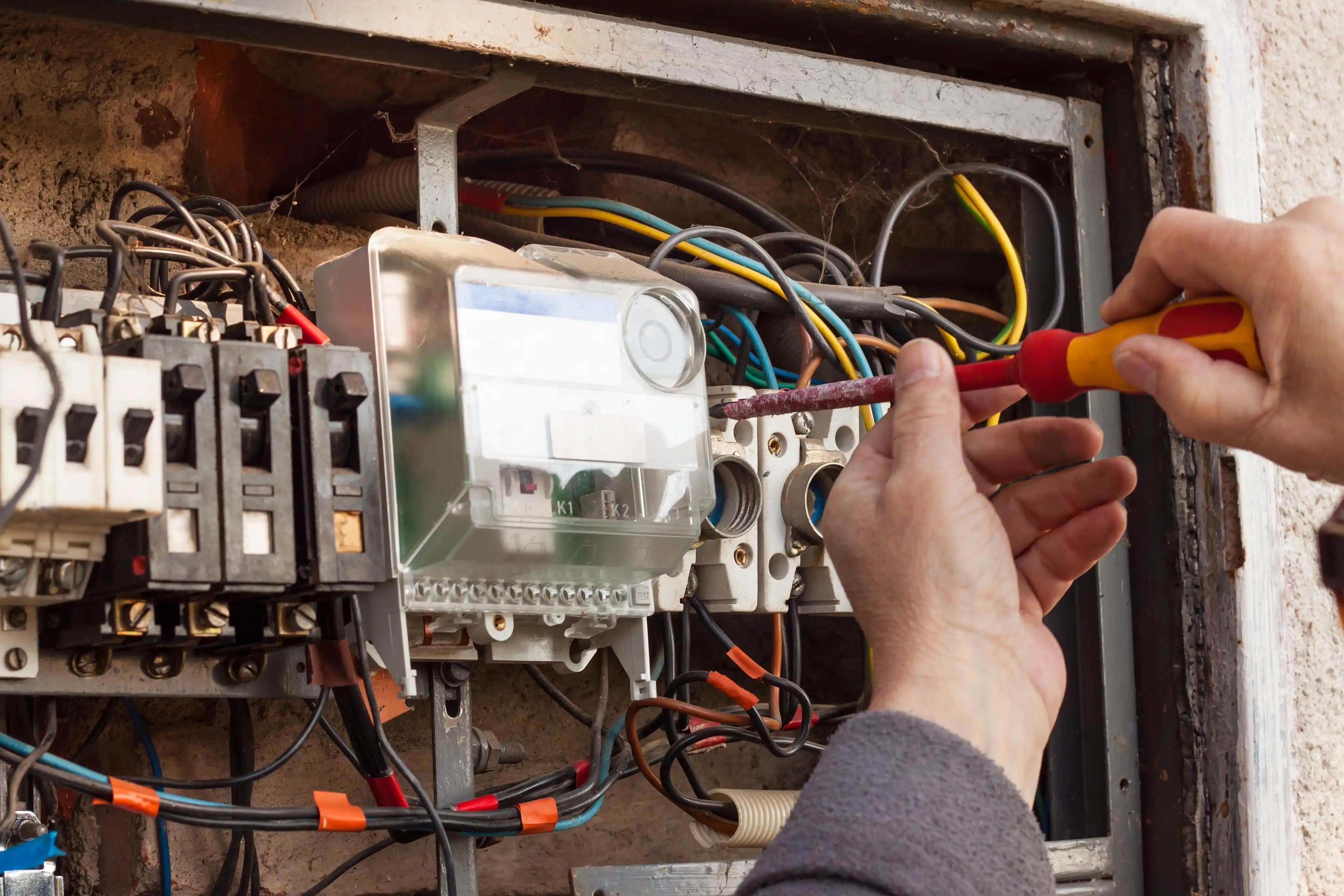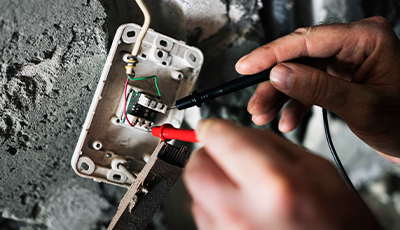Usual Electric Troubles Every Property Owner Must Learn about
Homeowners typically run into numerous electrical issues that can impact security and functionality. Problems like flickering lights and tripped circuit breakers are much more typical than numerous understand. These circumstances can indicate much deeper electrical worries that warrant focus. Recognizing the indicators and dangers connected with outdated wiring and dead outlets is essential. What steps can be required to stop these issues? Checking out these usual electrical issues can disclose crucial understandings for keeping a secure home environment.

Flickering Lights: Causes and Solutions
Why do some house owners experience flickering lights? Flickering lights can be a typical inconvenience, often suggesting underlying electrical concerns. One main cause is malfunctioning or loose connections within light components or circuitry, which can cause periodic power supply. Furthermore, utilizing high-wattage devices on the same circuit may cause voltage fluctuations, leading to lowering or flickering. An additional possible issue is an overloaded circuit, where too many tools attract power simultaneously, straining the electric system. Furthermore, outdated or degraded circuitry can add to inconsistent electric circulation. Sometimes, flickering lights may signify a trouble with the home's electrical panel or solution line. Homeowners should deal with flickering lights quickly to stay clear of potential dangers. Solutions might include tightening links, redistributing device tons, or seeking advice from a certified electrical expert for a comprehensive evaluation. Identifying the origin can assist guarantee a secure and stable electric system in the home.
Tripped Circuit Breakers: What You Required to Know
Have home owners ever questioned what creates their circuit breakers to journey suddenly? This common issue often emerges from an overload of electric circuits, where too numerous devices attract power simultaneously. In such situations, the breaker acts as a safety and security device, interrupting the circulation of electrical energy to avoid overheating and possible hazards. An additional regular reason is a short circuit, which takes place when a real-time cord contacts a neutral cord, developing a surge of power that journeys the breaker. Ground faults can additionally cause tripped breakers; these take place when a real-time wire touches the ground or a based surface, posing significant safety and security risks. Property owners need to on a regular basis analyze their use of high-wattage devices to avoid overwhelming circuits. In addition, comprehending the feature of breaker can help them respond suitably throughout a trip, guaranteeing their home continues to be well-maintained and risk-free.
Out-of-date Electrical Wiring: Dangers and indications
Outdated wiring can present substantial dangers to home owners, often going unnoticed until troubles arise. Homes built before the 1980s might still have aluminum electrical wiring or knob-and-tube systems, which are no more considered secure. Indicators of outdated wiring consist of flickering lights, often stumbled breaker, or shedding smells near electrical outlets. These signs may recommend that the electrical system is overloaded or deteriorating.Additionally, home owners might observe swelter marks around switches or electrical outlets, which can suggest getting too hot. The threat of electrical fires considerably raises with obsolete electrical wiring, as these systems were not made to take care of modern-day electric tons. Home owners are urged to have their electrical wiring examined consistently, especially when remodeling or adding brand-new devices. By identifying these indicators early, they can prevent unsafe circumstances and maintain a more secure living atmosphere. Updating to current electric standards is an aggressive action in keeping home safety and security and efficiency.
Frequently Blown Fuses: Repairing Tips
Regular blown integrates can indicate underlying electrical issues that may stem from out-of-date wiring or overloaded circuits. Homeowners experiencing this trouble needs to first recognize the appliances connected to the affected circuit. It is a good idea to prevent making use of several high-wattage gadgets at the same time, as this can bring about circuit overload. If the issue lingers, examining the circuit box for indicators of wear or damage is essential; a malfunctioning fuse box may require replacement.Additionally, looking for loose links within the circuit can help protect against future incidents. House owners need to additionally confirm that the integrates being utilized are of the right amperage, as using an inaccurate fuse can exacerbate the trouble. Getting in touch with an accredited electrician is recommended to examine the electric system further if these repairing ideas do not solve the problem. Addressing these concerns quickly can aid reduce dangers and guarantee the safety and security of the home's electrical facilities.
Dead Electrical Outlets: Common Reasons and Solutions
When a property owner comes across a dead outlet, it can often give disappointment and complication. Numerous typical reasons may cause this problem. One constant wrongdoer is a tripped circuit breaker, which can be conveniently reset. If any type of breakers are in the off placement, homeowners must check their electrical panel to examine. Another opportunity is a malfunctioning electrical outlet itself, which might call for replacement. In addition, loosened wiring links within the outlet can interrupt power flow, making inspection essential.Sometimes, the problem may stem from an overloaded circuit, particularly when multiple gadgets are connected. In such cases, redistributing the electric tons can resolve the problem. House owners must additionally consider the age of their circuitry; older systems may call for updates to fulfill modern electric needs. If these steps do not fix the situation, consulting a licensed electrician is a good idea to guarantee safety and proper medical diagnosis.
Electric Shocks: When to Be Worried
Just how can property owners determine whether an electric shock warrants worry? Home owners need to initially assess the severity and context of the shock. A mild fixed shock, often really felt when touching metal things, is usual and normally harmless. Nonetheless, if the shock occurs while communicating with a plugged-in device or outlet, it may show a much more major issue.The area and frequency of the shocks are important. Repetitive shocks from the very same resource, particularly in wet locations like kitchens or shower rooms, could indicate faulty circuitry or insufficient grounding. House owners need to likewise think about the experience of the shock; a jolt that triggers discomfort or muscular tissue contractions is more disconcerting than a simple tingle.If there's any type of unpredictability, it is advisable to consult a certified electrical contractor. Overlooking potential electric dangers can cause serious security dangers, consisting of fire or extreme injury.
Overloaded Circuits: Prevention and Precaution
Overloaded circuits pose significant dangers in household settings, usually leading to electric fires or devices damage (Level 2 Electrician Sydney). Home owners should acknowledge the indicators of an overloaded circuit, such as often stumbled breakers or dimming lights. Applying preventative safety and security techniques can assist mitigate these risks and assure a safer living environment
Acknowledging Overloaded Circuits
What indications show that a circuit may be overloaded? Homeowners need to be attentive for several key indications. Often stumbled breaker or blown merges recommend too much lots on the circuit. Lowering or flickering lights, especially when other appliances remain in use, can represent an insufficient power supply. Additionally, electrical outlets or buttons that feel read this article warm to the touch might indicate overheating, a possible fire threat. Unusual humming noises from outlets also call for focus, as they can signify electric problems. Finally, if appliances run inefficiently or stop working to start, it may signify an overloaded circuit. Acknowledging these indicators early can aid protect against major electrical troubles and promote a much safer home environment.
Preventive Safety Practices
To preserve a safe and efficient electrical system, home owners have to apply preventive safety methods that address prospective circuit overloads. One reliable step is to stay clear of connecting too numerous tools to a solitary electrical outlet, as this can go beyond the circuit's capability. Using power strips with integrated circuit breakers link can aid distribute power safely. House owners should likewise frequently inspect cables and appliances for damages and change any damaged equipment without delay. It is critical to ensure that circuit breakers are working correctly and to be aware of the total electrical power being utilized in each circuit. Furthermore, getting in touch with an accredited electrical expert for routine inspections can recognize potential problems before they rise, assuring a safer living setting and extending the life expectancy of electrical systems.
Often Asked Inquiries
Just how Usually Should I Have My Electric System Inspected?
Regular evaluations of electrical systems are recommended every three to five years. Homeowners need to take into consideration much more constant checks if they experience issues, embark on remodellings, or reside in older homes to guarantee safety and security and conformity.
Can I Deal With Electrical Issues Myself or Work With a Specialist?

What Are the Signs of an Electrical Fire Danger?
Signs of an electrical fire danger consist of often stumbled breaker, flickering lights, shedding smells, stained electrical outlets, or warm, buzzing wires. Property owners ought to continue to be alert and seek professional help if any one of these signs exist.
How Do I Know if My Home Demands an Electrical Upgrade?
To identify if a home needs an electrical upgrade, indications include constant breaker journeys, outdated electrical wiring, inadequate outlets, flickering lights, and the presence of older electric panels, suggesting potential security threats and inadequacy.
Exist Specific Security Tips for Do It Yourself Electrical Work?
When considering do it yourself electrical job, one need to always transform off power, utilize insulated tools, confirm circuit performance, adhere to local codes, and consult specialists for complicated tasks to ensure safety and prevent crashes. One more possible concern is an overloaded circuit, where also numerous tools draw power at the same time, straining the electric system. The danger of electric fires markedly raises with obsolete electrical wiring, as these systems dig this were not created to handle modern electric tons. Frequent blown integrates can show underlying electrical problems that may stem from out-of-date wiring or overloaded circuits. To keep a reliable and safe electric system, house owners must carry out precautionary safety techniques that attend to possible circuit overloads. Accredited Service Provider Level 2 Electrician. Indicators of an electric fire risk include often tripped circuit breakers, flickering lights, melting smells, stained electrical outlets, or warm, buzzing cords